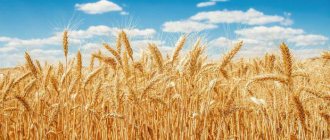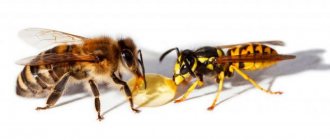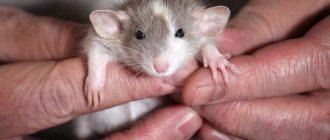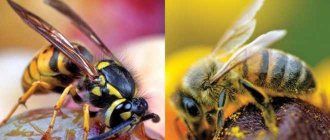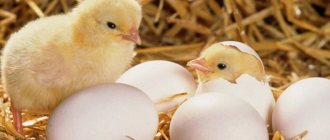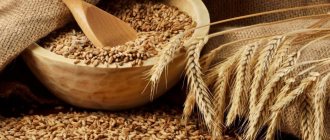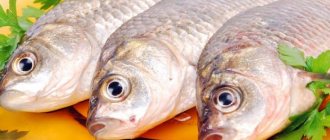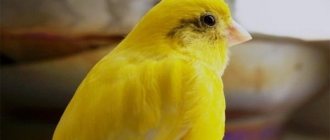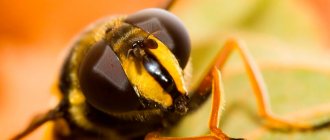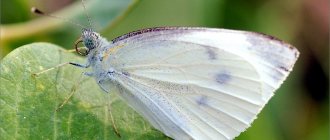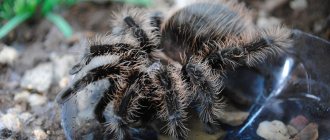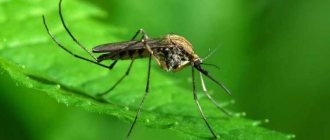The development of livestock farming necessitates an increase in the amount of feed for livestock. According to statistics, about half of the entire average annual grain harvest is spent for these needs. At the same time, of the total mass, 15-20 million tons fall on wheat. To reduce the cost of livestock products, instead of more expensive food grains, feed grain is used. It is intended directly for feeding livestock. Feed is cheaper. This allows us to reduce the cost of livestock products.
What is feed wheat
Cereal grain used to feed livestock is called feed. The name comes from the French word “fourrage”, which means “feed”. It is almost never specially grown; most often it is a product that does not meet certain standards and has not passed quality control for use in the food industry.
However, this does not mean that such grain is completely unsuitable for use - it has sufficient characteristics and nutritional value to be used as feed for farm animals. Before purchasing such food, you should find out what it looks like and its features.
Feed grains are not just wheat; Corn is considered the most nutritious and popular among livestock farmers. Barley and oats are also used as animal feed. Forage used for feeding:
- horses;
- cows;
- pigs;
- sheep;
- ducks and geese;
- rabbits;
- chickens
Feed grain is popular not only among livestock breeders who raise livestock for subsequent sale, but also among owners of small household plots.
For which animals can it be used?
The scope of application of forage in agriculture is simply enormous. In livestock farming, concentrated feed is used for growing:
- dairy and beef cows;
- pigs;
- sheep, goats;
- chickens, ducks, geese, turkeys, etc.;
- rabbits;
- horses.
That is, the type of food is almost universal. The use of concentrates is mandatory for farms of almost any specialization.
Key Features
The main distinctive feature of cereal grains, called feed grain, is its low quality compared to that which is supplied to the food market and used after processing for human food. Also, forage is not used as seeds for sowing fields, since the sprouts are weak and often die.
Feed grain is suitable for use as feed for farm animals, but before purchasing you should pay attention to its quality.
The following features are characteristic of feed grain:
- a large percentage of damaged grains;
- high concentration of starch;
- a small amount of fats and carbohydrates;
- high energy value and the presence of essential vitamins.
However, it must be remembered that fodder refers not only to cereal grains, but also to other types of feed that are usually used to feed livestock. They are used both fresh and dried (in winter).
Crop care
Caring for spring wheat crops includes: a set of measures aimed at combating weeds, additional fertilizer after germination and during the flowering period (if necessary), treating crops against harmful insects and diseases. Typically, treatment with any preparations is carried out using agricultural aviation - this is much faster, more efficient, and with minimal trauma to the seedlings.
Let's look at the main diseases to which winter wheat crops are exposed:
- rust
- powdery mildew
- root rot
- smut
- bacteriosis
Thanks to the winter form of cultivation, some of the causative agents of these diseases are suppressed by severe frosts. But in cases of mass infection of crops, treatment with Bayleton, Tilt, Fundazol is necessary.
If the effect is insufficient after a one-time treatment, a repeat treatment is carried out.
The main signs of these diseases are slower growth, discoloration of spikelets and stems, absence of ovary or development of small spikelets, and rotting of roots.
The pests that attack winter wheat crops most often are:
- bread beetle
- grain fly
- bread drinker
- ground beetle.
What needs to be done to prevent this problem? First of all, high-quality loosening of the soil and the introduction of special preparations capable of destroying pest larvae.
Of particular importance is also high-quality post-harvest seed cleaning and dressing, sowing spring wheat after the “correct” predecessors. For post-emergence treatment of crops, the preparations Karate, Bazudin, Diazinon are used
For post-emergence treatment of crops, the preparations Karate, Bazudin, Diazinon are used.
Forage demand
Since feed grain is the basis of the diet of farm animals, the demand for it is always at a high level. Moreover, during dry seasons or in certain regions where, due to climatic conditions, the harvest is small, the cost of forage, which belongs to the 5th or 6th class, is at the level of the 4th class, which is used in the food industry.
Equipment examples
| Name | power, kWt | Possibilities | Cost in rubles, |
| PDA | 4-5 | Multifunctional line | From 550,000 |
| KKU | 4-5 | Multifunctional line | From 450,000 |
| LBMVC | 16-30 | For protein and mineral supplements | From 150,000 |
| LH | 30-130 | Industrial granulator | From 170,000 |
| LG mini | 15 | Household granulator | From 90 000 |
| PZ | 3-5 | Flattening | From 70 000 |
| DKR | 10-100 | grain crusher | From 170,000 |
| SSK | 1-5 | Screw type mixer | From 70 000 |
| SVG, SL | 1-11 | Horizontal mixer | From 90 000 |
| TS | 1-5 | Screw | From 80 000 |
| BM, BGP | 1-15 | Bunker | From 65,000 |
| OGM, DG | 20-110 | Granulator | From 350,000 |
| DG mini | 2-22 | Household type granulator | From 70 000 |
| EVDU | — | Dispenser | From 45 000 |
The cost of a high-quality line ranges from 300,000 rubles. It can take up to 1 million rubles to purchase ready-made feed for the season. If you buy grains separately, it comes out 2-3 times cheaper. The payback period for a small plant is a year and a half. The profitability of production is quite high.
Product requirements
There are international requirements for feed grain - the absence of foreign odors, the integrity of the grains and the absence of dangerous infections. In this case, the type and variety can be any.
Expert opinion
Zarechny Maxim Valerievich
Agronomist with 12 years of experience. Our best country expert.
Ask a Question
As for the domestic GOST (R 54078-2010), it more specifically indicates the parameters that grain that will be used as feed for farm animals must meet.
The list includes the following points:
- healthy appearance of grains and their characteristic color;
- absence of stains, traces of mold and rot, or musty odor on the grain;
- the percentage of litter does not exceed 5;
- percentage of mineral impurities - no more than 1;
- percentage of grain impurities - no more than 15;
- the percentage of specimens affected by the head fungus is no more than 10;
- the percentage of specimens showing traces of Fusarium infection is no more than 1;
- at least 87% dry grain per kilogram of product.
According to GOST definition, weeds include soil particles and pebbles, weed seeds, grain husks, particles of stems and leaves, grains and seeds of legumes and other crops.
See also
Is it possible or not to sow winter wheat in the spring, the reasons for not tillering and how to fightRead
As for grain impurities, it can be sprouted or unripe grain, as well as broken, wrinkled and deformed specimens.
Expert opinion
Zarechny Maxim Valerievich
Agronomist with 12 years of experience. Our best country expert.
Ask a Question
In addition, there are requirements for the energy value of forage, which differ depending on what animals they plan to feed. So, for cattle this figure should be at least 12 MJ per kilogram of product, for pigs - at least 14 MJ, and for poultry - about 13 MJ.
When purchasing fodder that you plan to feed livestock with, be sure to take a handful of the product and smell it; the presence of a musty odor indicates that the forage is of poor quality and was stored in violation of the requirements. It is not recommended to purchase such a product, as it can cause livestock poisoning and death.
Storage rules
Grain with a moisture level of no more than 12% is sent for storage. At the same time, in the granary this figure should be at the level of 40-75%, and the air temperature should not exceed 80 degrees.
Feed wheat tolerates storage well, but to extend its life while maintaining grain quality, follow the following rules:
- dry the grain before storing it in the granary;
- do not mix forage with different levels of moisture and contamination, so as not to provoke spontaneous heating of the wheat;
- do not combine chilled forage with heated dried grain;
- Do not store healthy wheat in the same room as damaged or contaminated grain;
- control the humidity of wheat and air in the grain storage throughout the entire storage period.
Depending on the dryness of the grain and the time of year, the height of the forage storage layer in bulk differs significantly:
- In the cold months, raw wheat is covered in a layer of up to 2 m, wet grain - up to 3 m, medium dry grain - up to 4 m.
- In the warm season, the thickness of the layer is reduced by 1.5-2 times.
It is considered optimal to store feed wheat in plastic bags. They do not allow light or moisture to pass through, and prevent contamination of grain by pests and diseases.
Classification
Feed grain is divided into three categories, depending on its quality the price of the product is set. First class products are considered the best - they contain a sufficient amount of proteins and vitamins, they are characterized by high energy value and contain a minimal amount of weeds and grain impurities. The cheapest grain is third class; it is rarely used in its pure form; as a rule, such fodder is added when preparing compound feed.
In addition, the classification of forage is carried out according to the following criteria:
- According to the growing season. There are winter and spring crops; as a rule, this parameter does not affect the quality of the product. Spring varieties are sown in April or May, and harvesting begins in August; depending on the region, these dates may vary slightly. Winter grain is sown in late August or early September, and harvested the following year in August.
- According to the structure of the endosperm. The grain can be hard or soft. The first option is especially popular among livestock breeders, since durum varieties have the following characteristics - they contain a high percentage of protein, hard grains are of the same small size, have strong stems, and have a glassy powdery consistency. This variety is used to feed cattle and pigs, and soft varieties are used to feed birds, rabbits and goats. Flour is also made from the soft version, however, baked goods made from it go stale very quickly.
There are 5 classes of products in total, the forage variety belongs to the 5th, but sometimes livestock farmers use the 4th class. The fifth class is characterized by a sufficient content of vitamins E and B, as well as a protein volume of 16%.
Types of corn
There are several varieties that differ from each other in grain composition, appearance, shape, and structural features:
- Dentoform.
- Siliceous.
- Waxy.
- Sugar.
- Bursting.
- Starchy.
- Membranous.
All these types, except filmy, are widely used in various branches of food production. There are also several hybrid varieties derived from the listed species.
Each species includes many varieties.
Dental corn
Tooth corn is so called because of the similarity of the shape of the grains to the shape of horse teeth: they are elongated, oblong, dense, and have a depression at the top. This species is characterized by high productivity and particular unpretentiousness. Kink corn is the most economical variety of maize. It is cultivated in all corn-producing countries.
Flint corn
Flint corn grains are shiny, smooth, and rounded at the ends; the color of the cobs can be either white or yellow. The species is characterized by a high content of solid starch. Characterized by endurance, excellent yield, short ripening time. The grains are used to produce flakes, cereals and other raw materials. Unripe cobs have a delicate sweetish taste and are often consumed boiled.
In the photo: completely unique ears of flint corn of the Glass Gem variety, obtained as a result of long-term selection of plants with grains of unusual color.
Waxy corn
This species gets its name due to the wax-like consistency of the grains. The surface of its grains is hard, matte, smooth, and the color may vary. This is not a very hardy variety with low yields, but its grains have a unique chemical composition of starch. Thanks to this, the flour made from them is characterized by increased stickiness.
Sweet corn
This is the undisputed leader in cultivation among all types of this grain crop. Due to its delicate sweetish taste, it is called milk corn in everyday life. As the name suggests, the fruits of this species are characterized by a high sugar content; its amount in the sweetest varieties is 10–12%.
The color of the grains is usually yellow, but depending on the variety and the degree of maturity of the cob, it can have shades from almost orange to yellowish-white. The shape of the grains can also vary greatly. When cut, grains of this type have a glassy consistency and contain large amounts of sugar.
Attention! The sugar maize crop is harvested before reaching full maturity and processed as quickly as possible, otherwise the grains lose their taste.
Corn popping
The cobs of this plant species can be of two varieties: with a sharp end and with a rounded end. They are usually somewhat smaller than other types of corn on the cob. The color of the grains may vary between species. The chemical composition of the grain is characterized by a high protein content, and its structure is such that when heated, the moisture contained in the germ evaporates and breaks the hard, thick skin. Interestingly, this variety has a bushy stem, with several ears ripening on each stem.
Attention! In addition to the familiar popcorn, cereals, flour and corn flakes are made from this type of cereal.
Starchy corn
Maize of this variety has a high starch content, which can be up to 80%. Thanks to this chemical composition, the grains are soft, mealy in consistency, easy to process into flour and molasses, and are a raw material for distilling alcohol.
Membranous corn
Due to the peculiar scales covering the grains of this species, it was not used in the food industry. In some African countries it is grown for livestock feed.
Differences from food grains
Feed grain differs from food grain in that it has a lower content of proteins and fiber, and, on the contrary, more carbohydrates. It is not used for food, but it is well suited for feeding farm animals. In addition to this difference, the cost of forage is significantly lower than grains intended for the food market, and it undergoes less stringent certification before sale.
Usage
Corn is a unique plant in terms of its breadth of use. Flour, cereals, molasses, starch are made from its fruits, and used for the production of beer and alcohol. Do not forget that paper, viscose, insulating films, linoleum, even film are made from its stems, cobs, and covering leaves. Everyone knows that medicine uses corn silk to treat kidney stones, stimulate the liver, kidneys and gall bladder. In addition, corn is used to make feed for livestock.
Feed corn is perfectly stored in specially equipped premises, from where agricultural enterprises sell it for the production of oil or feed to everyone.
Those who grow edible corn on their plots or buy it at the market boil it for several days. It can only be preserved by freezing or canning.
If suddenly it occurs to someone to use sweet corn for feed, then this can also be done immediately after harvesting. But this is unlikely, because its production is more expensive than fodder. This is what we buy all year for salads and side dishes, take expensive tin cans home and enjoy its sweet, delicate taste.
How to use forage to feed livestock
Universal food, which is forage, must be used correctly so that it benefits animals and birds and does not harm their health. To do this, adhere to the following standards in the total share of feed:
- 35% for cattle;
- 40% for pigs and small animals;
- 30% for horses;
- from 20 to 40% for rabbits;
- up to 60% percent for birds.
See also
Description of fusarium head blight of wheat, symptoms of grain disease and how to treatRead
Depending on the type of feed grain used, preparation is carried out before feeding it as feed:
- if the feed contains a large amount of cellulose, it is used exclusively for cattle and horses;
- the average percentage of cellulose allows the grain to be used for pigs and poultry;
- soft varieties are suitable for poultry, and hard varieties are suitable for large animals. Otherwise, the forage must be steamed to soften the shell; you can also pre-sprout the grains or grind them.
Forage is best absorbed if used as part of mixed feed; in this case, it is possible to compensate for the damage from a high percentage of starch by adding other components. Also, feed is pre-enriched with vitamin-mineral complexes, fats and fiber and other feed additives.
Names at home
Of course, it is better to buy high-quality feed. Related production of nutritious food is often organized on large farms. Taking into account the high cost of such a diet, many livestock breeders are turning to their own production of a balanced feed base.
The advantage of a homemade composition will be high quality. In order for the composition of the mixture from home to be complete, you need not only to know what the feed is made from. In addition to the exact quantities of ingredients, you will need some equipment. The simplest units:
- grain crushers;
- granulators;
- dispensers.
Household use does not require large volumes of mixtures. Therefore, it is enough to choose low-power devices that can be connected to a regular electrical network of 380 V. The productivity of mini-factories is sufficient for the production of mixed feed 250-3,000 kg per hour. Modern copies are equipped with fully automated control, so they do not require any special skills.
The sequence of actions for home production can be outlined in several stages:
- selection of constituent components;
- dosing;
- grinding;
- preparation of the mixture.
Recipes compiled at factories take into account all the necessary components in proportions, so you can proceed to the process of preparing the compositions only after purchasing the necessary ingredients.
Daily norms
There are rules for connecting parts together. For example, first you need to mix the crushed cereals. Then meal and cake are added to them. At the last moment, sometimes even before feeding, vitamin and mineral premixes are included in the composition. When fattening cattle, strict daily consumption rates must be observed. You can also take into account the variety of ingredients in recipes for:
- dairy breeds;
- beef cows;
- for stud bulls.
Homemade feed is prepared according to a basic recipe with the following components:
- wheat - 48%;
- barley - 36%;
- cake - 8%;
- feed yeast - 3%;
- bone meal - 3%;
- lime flour - 1%;
- table salt - 0.5%;
- vitamin premix - 1%.
The composition of feed for cattle is ground, mixed, and, if necessary, granulated. Some elements of the home composition can be replaced. For example, instead of meat and bone meal, fish meal is suitable. It is a source of calcium, so in fact you can even use eggshells.
Lime flour - phosphorus. It is needed to improve the functioning of the cattle gastrointestinal system. The component will successfully replace chalk, and barley will replace fiber.
It is also needed to improve the functioning of the gastrointestinal system. It cannot be replaced completely, but you can save money by adding small gravel pebbles and river sand instead of part of the barley.
Advantages and disadvantages
Feed grain, like any feed intended for farm animals, has its advantages and disadvantages.
Among the advantages it is worth noting:
- Optimal composition suitable for feeding animals and birds. With the additional addition of phosphorus and lysine to the feed, it is possible to improve digestion and achieve harmonious development.
- Since the forage contains a high content of carbohydrates, this has a positive effect on the shelf life of the feed, prolonging it.
- The affordable price, which varies slightly in different regions, allows the forage to be used both for feeding animals on farms and in private farms.
The disadvantages include:
- Low fiber and protein content with an increased concentration of carbohydrates can lead to obesity in livestock.
- A high percentage of starch causes gastrointestinal disorders in animals.
- The low content of sugars and fats sometimes provokes indigestion and poor absorption of feed.
Forage grasses
All forage grasses are divided into four economic and botanical groups: bluegrass, legumes, sedges and forbs. The first two groups include plants from the corresponding families; the sedge group includes species from the sedge and rush family, and the forbs include plants of all other botanical families.
- Perennial legumes. Horned grass, meadow clover, creeping clover, hybrid clover, alfalfa, sainfoin, sweet clover, eastern goat's rue, goat's rue, perennial lupine.
- Perennial bluegrass herbs. Meadow timothy, awnless brome, meadow fescue, cocksfoot, wheatgrass, tall ryegrass, multifloral ryegrass (multifloral ryegrass), rootless wheatgrass, Siberian hair grass.
- Annual legumes. Common vetch (spring), hairy vetch (winter), pelyushka, seradella, crimson clover.
- Annual bluegrass grasses. Sudan grass, paisa, mogar, annual ryegrass (annual ryegrass).
- Non-traditional forage plants. Weyrich's knotweed, silphium pierced, maral root, hard comfrey, oilseed radish, mallow.
Full production cycle
The types of equipment that are possible for cooking are numerous. Manufacturers offer various line configurations that differ in power.
The most profitable farm purchase is a multifunctional machine. It is capable of performing all processes simultaneously (crushing, mixing, grinding). A fresh batch can be created shortly before feeding, and made in a convenient form: granular or crumbly.
The machine will process any cereal mixture, grind grass, and other components of your recipe. The units are powerful and allow you to produce up to 1/t of feed per hour. Models differ in functionality, and some components are interchangeable.
At the beginning of the process, you need to place the cereals in the crusher. The component can be turned into flour or chaff, select the desired size of the grain. The crushed grain goes into the dispenser, where other components can be poured. To accurately determine doses, the unit is equipped with scales.
From the dispenser, all components are moved through the auger into the mixing bowl. A mixer works inside it, turning the components into a single mass.
If a granular version is needed, the finished composition is moved along a conveyor to the press. It uses pressure to produce granules of the same size and weight. Final processing occurs under air flow in a special column.
The profitability of multifunctional units is determined by their cost. Well-known models are presented by both domestic and imported companies. To create a line at home, it is better to purchase versions of well-known brands, since they will be easier to repair later.
If you have the funds, it is better to consider modern equipment with good performance and energy consumption. If you don’t have enough finances, consider Russian lines that are multitasking.
